- Home
- H A CULLEY
Caging the Lyon
Caging the Lyon Read online
CAGING THE LYON
By
H A Culley
Book Three of the Normans Series
First Kindle Edition 2013
Text copyright © 2013 H A Culley
The author asserts the moral right under the Copyright, Designs and Patents Act 1988 to be identified as the author of this work.
All Rights Reserved. This book may not be reproduced in any form, in whole or in part, without written permission from the author.
Published by Orchard House Publishing
Cover design by Pete Zelewski. © Pete Zelewski
This book is dedicated to the memory of my parents,
Harry and Gwen Culley
Other books by H A Culley
The Normans Series
The Bastard’s Crown
England in Anarchy
TABLE OF CONTENTS
CAGING THE LYON
Author’s Note
List of Principal Characters
PART ONE – THE REIGN OF THE MAIDEN
Chapter One – Unpromising Beginnings 1158 – 1160 A. D.
Chapter Two – A Legend is Born 1160 - 62 A. D.
Chapter Three - The Grim Reaper Cometh - 1165 – 1166 AD
PART TWO – THE LION RAMPANT
Chapter Four – Trouble in the Family 1170 – 1173 AD
Chapter Five – Rebellion - 1174 AD
Chapter Six – Prelude to Tragedy – 1174 AD
Chapter Seven - The Battle of Alnwick - 13th July 1174
PART THREE – REPERCUSSIONS
Chapter Eight – The Treaty of Falaise
Chapter Nine – End of the Line
Chapter Ten – The Death of A King
Chapter Eleven – The Lyon Unchained 1189 A. D.
Author’s Note
This historical novel is set in the 12th Century covering the years 1158 to 1189 A.D. This is when Henry II, the first Plantagenet king, ruled in England and the grandsons of King David I ruled Scotland. Henry’s reign over England and half of France was a troubled one. He was constantly feuding with the kings of France, his own nobles on the continent and with his sons, particularly the Young King, Henry’s eldest son, also called Henry. The novel is mainly set in the border country between England and Scotland. The Lyon in the title is William the Lyon, king of Scots, though he wasn’t called the Lyon until after his death. The Lyon, or Lion, given to him as a soubriquet didn’t refer to his courage but to the red lion rampant on a gold field that he adopted as his heraldic device; a device that has been used ever since by the kings of Scotland. Perhaps I should add that this is not a universal view. Some historians hold that it referred to his designation as the Lion of Justice and that it was his son, Alexander II, who first used the red lion rampant. As Lion is also spelt Lyon in various sources I have inclined to the view that it was a heraldic reference and therefore spelt it as it written today in the title of the chief heraldic office in Scotland: the Lord Lyon King at Arms.
The terms of the treaty of Falaise are much as depicted in the novel. The question of English sovereignty over Scotland, one of the key clauses of the treaty, was to lead to centuries of dispute between various kings of England and their Scottish counterparts and, in particular, to the Wars of Scottish Independence which lasted for six decades from 1296 to 1357.
Hugo de Cuille, also spelt Cuilly, is said to have arrived in England around the time of the Norman Conquest and to have been granted lands in Derbyshire by King William. It is believed that he is the origin of the surname Culley but this may or may not be true. History doesn’t recall what happened to him and his descendants after 1066 so I have taken the liberty to let my imagination run free. There was no barony of the Cheviot but Henry Beauclerc did create twenty-one baronies in Northumberland early in his reign, including the barony of Wooler, held by the de Muschamps, and of Alnwick, held by the de Vescis. Wooler included the eastern part of the Cheviots; Redesdale and Harbottle were held by the d’Umfravilles; Wark was held by l’Espec initially, together with Carham, and then by de Roos.
To save confusion between the two branches of the family I have given Guy de Cuille the sobriquet FitzRichard, meaning son of Richard.
I have used my own version of the Robin Hood legend in the plot. He is, of course, a fable rather than a historical character but the more familiar stories place him in the time of Prince John. However, I have placed him two or three decades earlier in time.
The de Soulis family were lords of Liddesdale but the wooden castle at Hermitage wasn’t built until the thirteenth century. The family had an unpleasant reputation and I have drawn on this for the character of Robert de Soulis.
I have used modern place names to make it easier to follow the plot.
There are certain words which might be unfamiliar to the reader. I list a few of these below:
Angevin - inhabitant of the French county of Anjou to the south of Maine.
Bailiff - administrative official. In a manor he represented the peasants to the lord, oversaw the lands and buildings of the manor, collected fines and rents, and managed the income and expenses of the manor. Bailiffs were normally outsiders and free men, that is, not from the village.
Braies - a type of trousers generally reaching to the knees or mid-calf. They could be made of leather, wool, cotton or linen. Later they became briefer and were worn as undergarments beneath hose.
Caparison - A cloth covering for a war horse. It was divided in two at the saddle and usually covered the horse from neck to rear, reaching down to the fetlock. It usually displayed the knight’s heraldic achievement (often misnamed coat of arms) but not always. Later caparisons covered the horse’s head as well.
Chausses - chain mail leggings covering the legs exposed below the hauberk.
Conroi - a troop of cavalry, usually knights.
Constable - person in charge of a castle in the absence of its lord. In particular, he was responsible for its defence.
Courser - the courser was more common as a war horse than the destrier and preferred by some as they were lighter and faster whilst still being quite strong. They were valuable horses, but less expensive than the highly-prized destrier.
Crenel - the gap between two merlons at the top of a castle wall. Together crenels and merlons form crenellations.
Destrier - the finest and strongest type of warhorse. These horses were usually stallions, bred and raised from a foal specifically for use in war. They were comparatively expensive.
Gambeson - a heavily quilted coat worn under the outer defence of chain mail to prevent it from chafing, or else worn on its own where it gave some protection from cuts and arrows.
Grough - a deep cut in a peat bog made by a water course; some can be twelve feet deep.
Jennet - a smooth-gaited type of horse known for its presence, style and smooth ride.
Knight’s Fee - an estate or manor held by a tenant in exchange for which he provides one knight to serve his lord for (normally) forty days per year and served under him in time of war.
Mark – A unit of currency in common use in the Middle Ages. It was equivalent to two thirds of a pound Stirling.
Merlon - the upright part of crenellations. See crenel above.
Mesnie - the knights forming the regular military component of a noble’s household.
Palfrey - the most expensive and highly-bred type of riding horse during the Middle Ages, sometimes equalling the knight's destrier in price. Consequently it was popular with nobles, ladies and highly-wealthy knights for riding, hunting and ceremonial use.
Picquet – a group of sentries posted between a camp and the enemy to give warning of an attack, especially at night.
Reeve - the man who was elected annually by the villagers to supervise their work for the lord of
the manor.
Rouncey - an ordinary, all-purpose horse. They were used for riding, but could also be trained for war. It was not unknown for them to be used as pack horses.
Routiers - mercenary soldiers organised into bands or routes. They were for hire but also plundered the countryside on their own account.
Scutage - the payment under the feudal system which allowed a knight to "buy out" of the military service due to his overlord in return for his tenure of land known as a “knight’s fee”.
Serjeant - a professional soldier who ranked between a knight and a man-at-arms. Most were mounted though the term was also used for an armoured spearman on foot.
Shatranj - a board game similar to modern chess which reached Western Europe from the East in the 9th Century.
Sheriff (England) - a senior royal official responsible for keeping the peace throughout a shire or county and to collect taxes on behalf of the king.
Sherriff (Scotland) - a senior royal official charged with keeping law and order in a shire who also acted as a judge.
Sou - a coin of low denomination used in medieval France. Twenty sous equalled one livre (pound).
Villein - a peasant personally bound to his lord, to whom he paid dues and services, sometimes commuted to rents, in return for his land.
List of Principal Characters
In order of appearance
Historical characters are shown in bold type
ROBERT OF LOCKSLEY Former squire to Guy FitzRichard and lord of the manor of Hathersage. Dispossessed by King Henry II
MARJORIE DE CUILLE Wife of Waldo de Cuille, lord of four manors in the High Peak, Derbyshire.
WILLIAM FITZRANULPH Sheriff of Nottinghamshire and Derbyshire. Illegitimate half-brother of the earl of Chester.
RALPH DUBOIS Deputy sheriff of Derbyshire and constable of Peverel Castle
JOHN LITTLE Former squire to Robert of Locksley, now a fellow outlaw
GUY FITZRICHARD Constable of Berwick Castle and baron of Craigmor in Lothian, Scotland
WALDO DE CUILLE Posthumous son of Waldo de Cuille, Marjorie’s husband
MARGARET DE CUILLE His twin sister. Later wife of Sir John Beauilly, deputy sheriff of Derbyshire
EMMA DE BULLY Wife of Guy FitzRichard
BLANCHE Guy and Emma’s daughter
MALCOLM IV King of Scots, brother of William
FERGUS Lord of Galloway
MÁEL COLUIM Rival to his cousin, Malcolm, for the Scottish throne. A prisoner in Roxburgh Castle
DUFF Senior serjeant at Berwick. Supporter of Máel Coluim
SIMON OF BERWICK Guy’s younger son
NICHOLAS OF CRAIGMOR Guy’s elder son
PATRICK OF DUNBAR Page at Berwick Castle, son of Waltheof
EDMUND FITZHENRY Constable of Craigmor Castle. Illegitimate son of Henry of Blois, bishop of Winchester
MARIANNE OF LAXTON Cousin of Robert of Locksley
WALTER FITZALAN High steward of Scotland
ROBERT DE BRUS Lord of Annandale
GOSPATRIC Earl of Lothian
HERVEY DE KEITH Marishal of Scotland and father of Duncan, Guy FitzRichard’s squire
HUGH DE CUILLE Cousin of Guy and son of Humphrey de Cuille
ELLIOT ELWOLD Son of the chief of the Elwold Clan in Liddesdale. Huntsman serving Hugh de Cuille
HUMPHREY DE CUILLE Baron of Cheviot and Redesdale. Hugh de Cuille’s father
RICHARD DE CUILLE Elder son of Hugh de Cuille. Squire to Robert de Muschamp
ROBERT DE MUSCHAMP Baron of Wooler and Glendale
STEPHEN OF LAXTON Marianne’s father and Robert of Locksley’s uncle by marriage
MILES Son of Robert of Locksley and Marianne of Laxton
WALTHEOF Earl of Dunbar and son of Gospatric
ROBERT FITZRANULPH Sheriff of Nottinghamshire and Derbyshire and lord of Alfreton and Norton
HENRY PLANTAGENET King of England, duke of Normandy, count of Maine and Anjou
HENRY, THE YOUNG KING Henry’s eldest surviving son
WILLIAM MARSHAL Famous tournament knight. Military tutor to Henry, the Young King
ELEANOR OF AQUITAINE Queen of England and duchess of Aquitaine
CLAIRE DE MUSCHAMP Robert’s only daughter, later Richard de Cuille’s wife
EDWARD DE CUILLE Hugh de Cuille’s younger son
BERNARD DE BALLIOL Baron of Barnard Castle in Teesdale, County Durham
JOCELYN DE MUSCHAMP Robert’s younger son, later Richard de Cuille’s second squire
WALTER Richard’s senior squire
PRINCE DAVID Earl of Huntingdon. Son of Prince Henry, earl of Northumberland and brother of King William the Lyon
ROBERT DE SOULIS Lord of Liddesdale
ROBERT DE ROOS Lord of Carham near Wark and a barony in Yorkshire
DUNCAN OF FIFE Earl of Fife and one of King William’s commanders during the invasion of Northumberland
ALAN FITZWALTER Son of Walter FitzAlan. Later high steward of Scotland
RANULF DE GLANVILLE Sheriff of Westmorland
ROBERT DE STUTEVILLE Baron of Kirby Moorside. Sheriff of Yorkshire
HUMPHREY DE BOHUN Constable of England
RICHARD DE LUCY Chief justicar of England - an appointment that combined the role of chief minister and head judge
SIR JOHN BEAUILLY Deputy sheriff of Derbyshire and constable of Peverel Castle at Castleton
WALTER DE BARCLAY Lord chamberlain of Scotland
BROGAN Saxon thief and murderer
CEDRIC LITTLE Freeman of Hathersage and brother of John Little
ERMENGARDE Queen of Scotland. Married William in 1186
PART ONE – THE REIGN OF THE MAIDEN
1158 TO 1166 AD
Chapter One – Unpromising Beginnings 1158 – 1160 A. D.
With his longbow slung over his shoulder Sir Robert of Locksley ran along one of the groughs intersecting the deep layer of peat that lay under the heather and grass which covered the plateau on top of Kinder Scout. He could hear the hunting party about one hundred yards away but he couldn’t see them as the grough was some seven feet deep. At an intersection where another, smaller, channel cut in from the south he crouched against the sloping side and peered round the corner. He saw several horsemen jump across the smaller grough. One mistimed his take off and landed short; the horse rolled to the bottom, trapping its rider under it.
Robert’s quarry, Waldo de Cuille, constable of Peverel Castle and deputy sheriff of Derbyshire, came riding back with two of his knights. They dismounted and slid down the steep side before carefully coaxing the panicked horse off its rider without injuring him further. Robert strung his bow and took careful aim at Waldo as the man straightened, pulling the thrown rider to his feet whilst the two knights with him calmed the distressed horse. Neither horse nor rider seemed injured, except for a strained knee.
For a moment the fallen rider blocked the target, then he limped to one side and Robert released the bowstring. The arrow sped towards its target, striking Waldo in the middle of his chest, punching through his over and under tunics, skin, muscle and bone in turn to penetrate his heart. Waldo was dead before he hit the gravel with its trickle of water at the bottom of the grough. The two knights looked round in alarm and one knelt to check Sir Waldo. The other caught the horse, which was still quivering with shock from its fall, vaulted into the saddle, drew his sword and kicked the startled palfrey into a canter along the grough towards the intersection from whence the arrow came.
The knight slowed as he turned the corner into the larger grough and then came face to face with the bowman, who was standing sixty yards away aiming another arrow straight at him. He sawed at the reins in panic, causing his mount to rear up so that the arrow struck its belly. Then a second one hit it in the chest as it came back down onto its forelegs. The horse crumpled to its knees as the knight jumped clear. He stood there looking at the bowman who was aiming another arrow straight at him. He let the sword fall from his hand in a gesture of surrender. The two stood staring at ea
ch other for a moment and then the other man lowered his bow and nodded before sprinting away round the next corner. Ten minutes later the huntsmen had organised a search but there was no sign of the killer.
Marjorie was devastated by the news. She and Waldo had only been married a few months and she was expecting their first child. She was very much in love with him, despite the fact that Waldo had been given the confiscated lands of Sir Guy FitzRichard de Cuille, the man she thought of as her father, when King Henry had seen fit to penalise Sir Guy for his support for King Stephen during the long struggle for the crown. She knew that Waldo hadn’t been comfortable with the way that he had come into ownership of his distant cousin’s four manors but he could hardly refuse the king. Henry Plantagenet had a fearsome temper when crossed and, in any case, he would have just given the estate and the appointment of deputy sheriff to someone else.

 The Wolf and the Raven
The Wolf and the Raven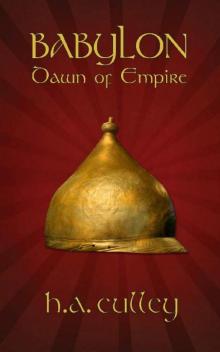 Dawn of Empire
Dawn of Empire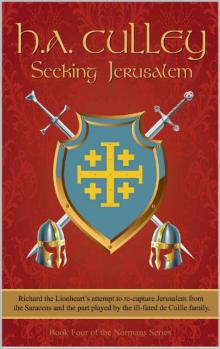 Seeking Jerusalem
Seeking Jerusalem The Strategos
The Strategos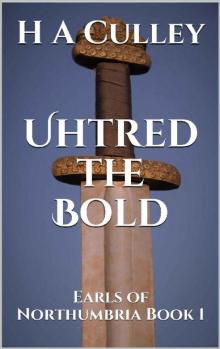 Uhtred the Bold
Uhtred the Bold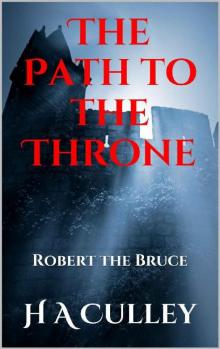 The Path to the Throne
The Path to the Throne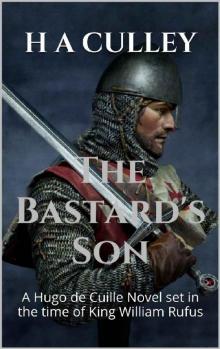 The Bastard's Son
The Bastard's Son Alexander
Alexander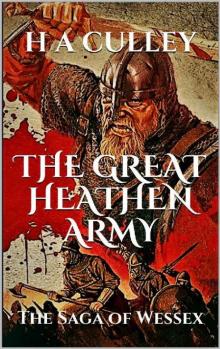 The Great Heathen Army
The Great Heathen Army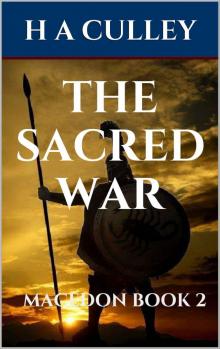 The Sacred War
The Sacred War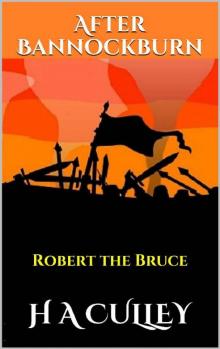 After Bannockburn
After Bannockburn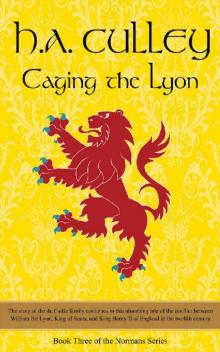 Caging the Lyon
Caging the Lyon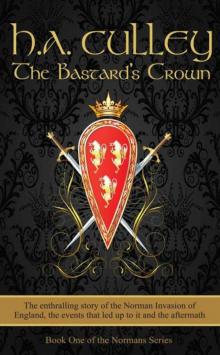 The Bastard's Crown
The Bastard's Crown WHITEBLADE
WHITEBLADE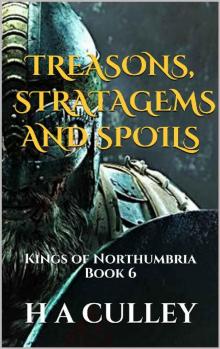 TREASONS, STRATAGEMS AND SPOILS: Kings of Northumbria Book 6
TREASONS, STRATAGEMS AND SPOILS: Kings of Northumbria Book 6 THE POWER AND THE GLORY: Kings of Northumbria Book 4
THE POWER AND THE GLORY: Kings of Northumbria Book 4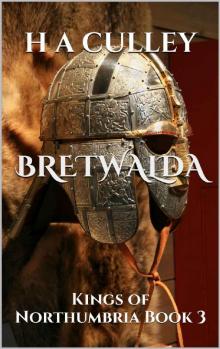 BRETWALDA: Kings of Northumbria Book 3
BRETWALDA: Kings of Northumbria Book 3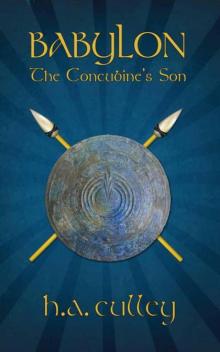 The Concubine's Son
The Concubine's Son The Fall of the House of Æthelfrith: Kings of Northumbria Book 5
The Fall of the House of Æthelfrith: Kings of Northumbria Book 5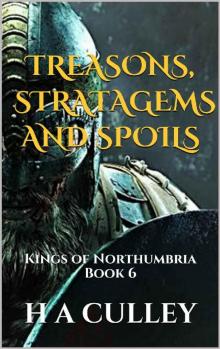 TREASONS, STRATAGEMS AND SPOILS
TREASONS, STRATAGEMS AND SPOILS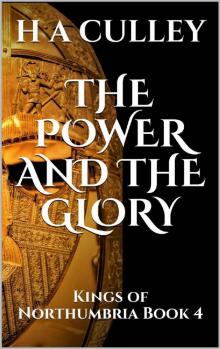 THE POWER AND THE GLORY
THE POWER AND THE GLORY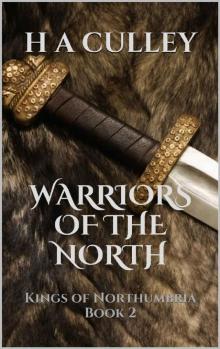 WARRIORS OF THE NORTH
WARRIORS OF THE NORTH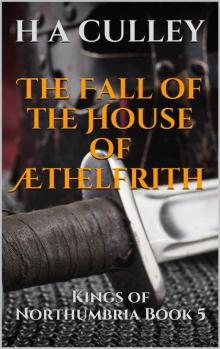 The Fall of the House of Æthelfrith
The Fall of the House of Æthelfrith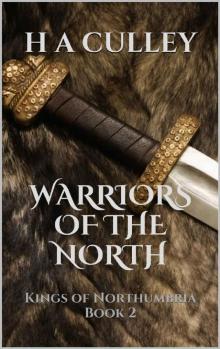 WARRIORS OF THE NORTH: Kings of Northumbria Book 2
WARRIORS OF THE NORTH: Kings of Northumbria Book 2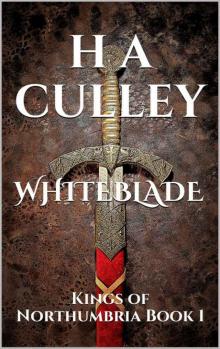 WHITEBLADE: Kings of Northumbria Book 1
WHITEBLADE: Kings of Northumbria Book 1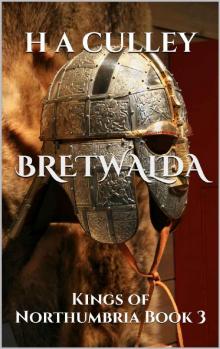 BRETWALDA
BRETWALDA